History of Allegheny Observatory
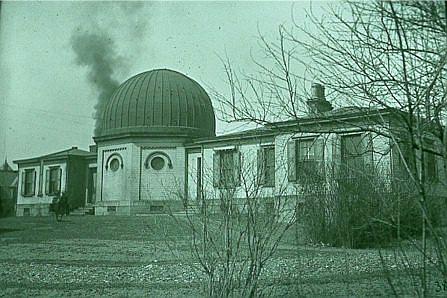
The Allegheny Observatory was born
February 15, 1859 when three citizens of Allegheny City met at the office of Professor
Lewis Bradley to consider the purchase of a telescope, "the magnifying power of which
would bring the heavenly bodies near enough to be viewed with greater interest and
satisfaction". These men and 29 others later formed the Allegheny Telescope
Association.
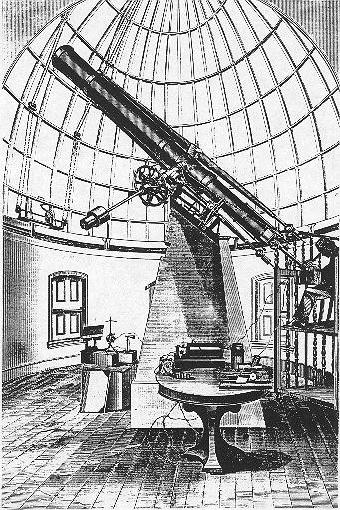
This club eventually purchased a 13"
refracting telescope from Mr. Henry Fitz of New York. It was delivered to the new
observatory building on Pittsburgh's northside on November 14, 1861. First light for the
Fitz Refractor was November 27, 1861. During this period the telescope was used almost
exclusively for the entertainment of the members. The moon and planets were the most
popular subjects and there is no evidence that any research was done with the telescope.
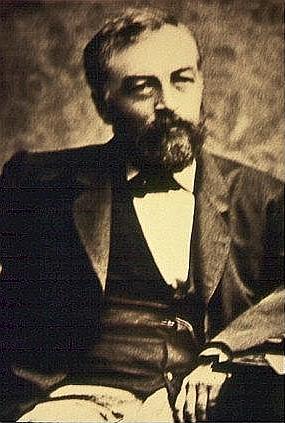
By May 1867 interest in the observatory
had waned and the declining membership, being in debt, voted to donate the telescope and
observatory building to the Western University of Pennsylvania, later to become the
University of Pittsburgh. In that same year the observatory was infused with new life
through the appointment of Professor S.P. Langley as Director of the Observatory and
Professor of Astro-Physics. The observatory received new scientific direction. Langley
used the telescope to study the sun, especially sunspots and heat from different parts of
the solar spectrum. At last true research had come to the Allegheny Observatory .
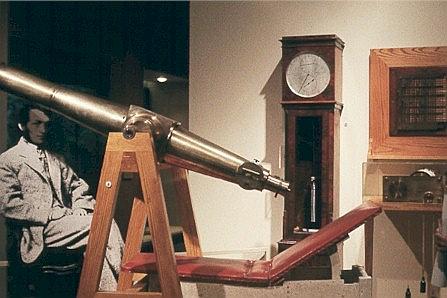
Through the friendship and aid of William
Thaw, a Pittsburgh industrial leader, Langley was able to improve the observatory
equipment and build additional apparati. One of the new instruments was a small transit
telescope used to observe the position of the stars as they cross the celestial meridian.
With this instrument Langley obtained accurate time. Realizing the need many industries,
especially the railroads, had for accurate, uniform time, Langley arranged to send time to
subscribers through the telegraph.
The money paid by these users, nearly $3000 annually, helped finance the observatory's
research, pay staff salaries, and help maintain the building. One of Langley's greatest
interests was to see the observatory put on sound financial footing.
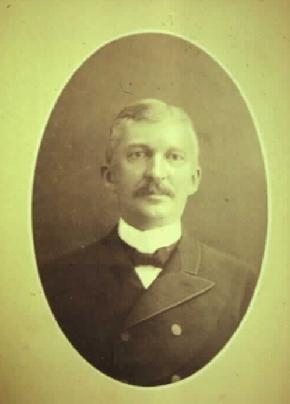
On June 1 1891, Professor Langley's
assistant, James Keeler, succeeded him as Director of the Allegheny Observatory and
Professor of Astro-physics. Keeler's investigations here fully maintained the splendid
reputation established for Allegheny by his predecessor. Keeler's observations of the
spectrum of Saturn's rings are of extraordinary interest. Considering the means at hand,
they have never been surpassed in excellence or beauty. Keeler's spectrographic proof
showed that every point in the ring system is moving with the velocity which a moon would
have if situated at that distance from the planet. With the 13" Fitz refractor Keeler
had provided the visual proof that the rings of Saturn were particulate.
Keeler recognized the shortcomings of the original Allegheny Observatory and began to
draw plans for a new one with a 30" refractor as the primary research instrument.
However, prospects for success in this regard discouraged him and he ultimately accepted
directorship of the Lick Observatory on March 8, 1898.

Upon the resignation of Keeler, John Brashear, the internationally know lens maker and Chairman of the
Observatory Committee, became the interim director. During this time the plot of land for
the new observatory was secured and the job of raising the capital for the building was
begun.

In a letter to Frank Wadsworth, Keeler
said, "When I do leave Allegheny, it will give me much pleasure to recommend you as
my successor." In 1899 Professor Wadsworth took up the directorship and immediately
set about supervising the building plans for the new observatory. His final drawings
closely parallel those of T.E. Billquist, the architect who designed the present
structure.
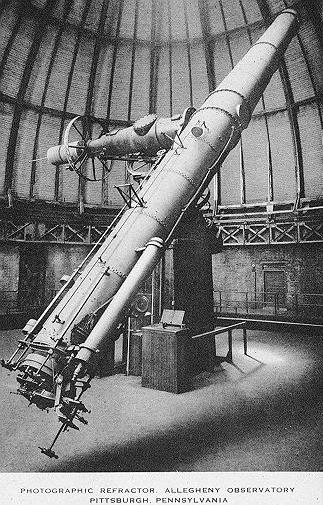
The 30" Thaw telescope is the primary
instrument of the Allegheny Observatory. It is the third largest refractor in the United
States and was constructed by the Brashear Co. It has a lens made from two glass disks
cast by the Shott Co. of Germany. It was originally designed to be a visual refractor but
Professor Schlesinger, Wadsworth's successor, thought a photographic instrument was
needed. The original lens was designed by Professor Charles Hastings to be used with
photographic plates which were sensitive to blue and ultraviolet light. The Thaw
telescopes' primary mission has been to study the distance to nearby stars. The parallax
program begun by Professor Schlesinger is responsible for the collection of over 110,000
photographic plates in the Allegheny collection. Information gathered from the Thaw
observations have helped set the distance scale of the universe.
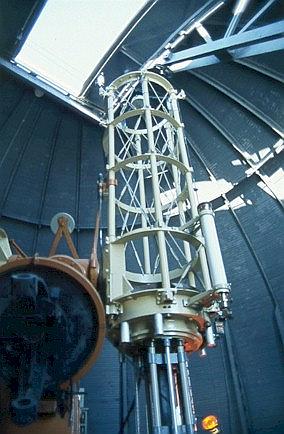
The second largest dome of the Allegheny
Observatory houses the James E. Keeler Memorial Telescope. The Keeler Memorial is a
reflecting telescope with a mirror 31 inches in diameter. Friends of James Keeler donated
the funds for the instrument which was built by the Brashear Co. The Keeler reflector was
originally used to determine the orbits of spectroscopic binaries, stars that are so close
that they appear even through a telescope as 'one'. With the Mellon spectrograph attached
the stars could be recognized as a pair through the study of their spectra. The Keeler has
also worked on the solar spectrum and more recently quasar studies.


In addition to the basic parallax program,
there have been other areas of study at Allegheny. Director Frank Jordan kept up a
photometric program on variable stars. He established definitive light curves for 29
Cephied variables and 16 eclipsing binaries. Nicholas Wagman, director after Jordan, was
responsible for the largest program of stellar parallax and proper motion of his time, the
determination of over 400 target stars parallaxes and the discovery of many unseen
companions. Under the previous director,
Dr. George Gatewood, Allegheny was involved in a program
to detect extrasolar planets. Under Dr. Gatewood, the Thaw telescope has been modernized,
including a new lens that works best in red light. Replacing the glass plate as the stars
image detector is the Multi-channel Astrometric Photometer(MAP). Light from up to 12 stars
is fed into separate detectors by fiber optics as a Ronchi ruling with four lines per
millimeter is passed across the field. Computer analysis of the times of the resultant
intensity variations permits extremely precise positions to be derived from only a few
minutes of observation. It is this technology that provided proof that Lalande 21185 had
planetary companions.
Now over 130 years after its birth, the Allegheny Observatory continues its quest to
unravel the mysteries of the universe. As an unparalleled leader in the field of
astrometry, Allegheny will continue it search for extra solar planets.
--Arthur
E. Glaser--
University of Pittsburgh
Department of Physics & Astronomy
Allegheny Observatory
159 Riverview Avenue
Pittsburgh, PA 15214
Last Modified 03/04/2021








